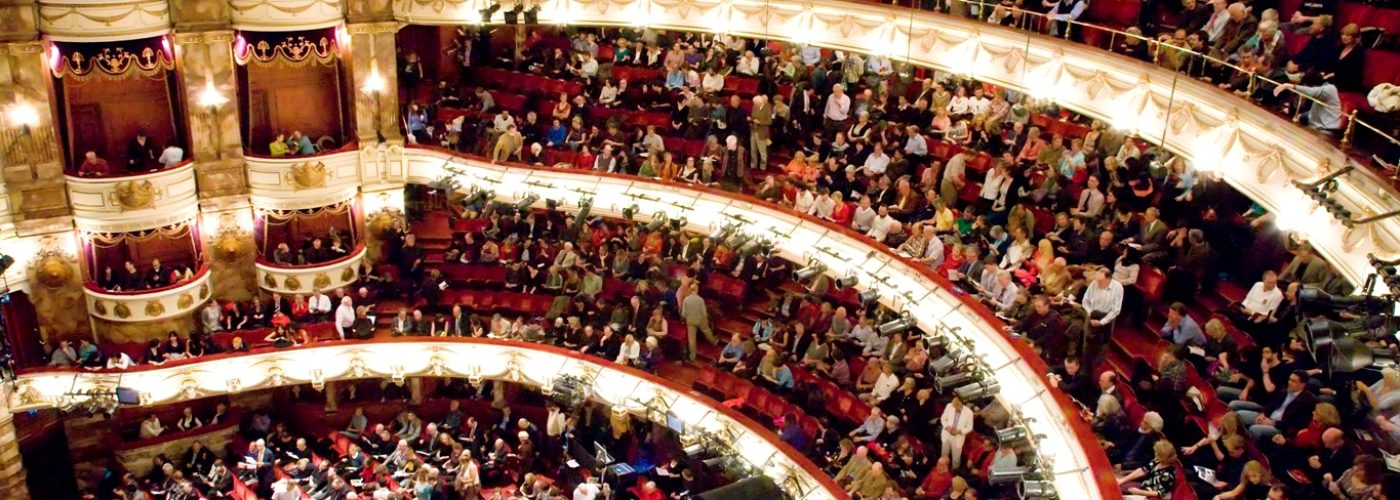One of the world’s most innovative opera companies with an international reputation for distinctive and highly theatrical productions, the English National Opera (ENO) is based at the London Coliseum, a Grade II listed building. The Coliseum is a prestigious landmark and has 2,359 seats – the largest theatre audience in London. The ENO undertook a significant four-year restoration programme in 2004, supported by English Heritage, and more recently an extensive fire detection and alarm system upgrade to the latest Siemens Sinteso technology.
Siemens has maintained the fire detection and alarm system at the Coliseum for a number of years. ENO Maintenance Supervisor Trevor Barnard worked closely with Siemens on the project and explains some of the challenges the team faced.
“The theatre is a prestigious and irreplaceable historical building. Its shape, size and height means that many areas can be extremely difficult to access, particularly around the stage and thorough risk assessments had to be undertaken to ensure safe working practices during installation.
“We have to take particular care with all furnishings and fittings as well as the delicate fabrics near the staging area. The theatre has extremely high level ceilings which means testing of fire detectors has to be carried out using special long poles.
“A major challenge for us is that all work has to be undertaken within a two week period in August, when the theatre has a yearly maintenance window and there are no staged performances. This is the time period when all operational works are undertaken. Careful programme planning is required to work around multiple trades and suppliers operating on site at the same time.”
Siemens has provided long-term support and maintenance of the ENO fire safety system for a number of years, which stood them in good stead during the fire detection upgrade. Their detailed knowledge and clear understanding of the building itself, the logistics and the needs of the organisation resulted in the ENO being offered a phased migration plan. There were two main benefits of this decision, firstly to meet and work to an agreed annual budget figure, and secondly to provide the confidence that operational milestones would be met.
Trevor continues: “Siemens worked with us in a unique way and it was very much a team effort. They completely understood the importance of the two-week completion date, the parameters that they had to operate within and the implications of non-performance on delivery. Siemens invested considerable time in pre-planning the logistics of the migration, for example, carrying out detailed surveys of the Coliseum prior to project delivery. I was impressed by Siemens’ meticulousness planning, resulting in minimum disruption and seamless implementation.”
Trevor explains: “The old system had twice as many loops as the new. Eight years ago I visited every single head and call point. I know the location of each and every one. As part of introducing a new numbering system, Siemens had to undertake this labour intensive job, visiting each new detector head and labelling accordingly. Each new detector has a unique address number, with over sixty devices on just one loop. This means that once the upgrade is completed Siemens will ensure all new detectors are re-labelled with their new address, all fire safety plans will be updated and the Computer Aided Design drawings of the building re-issued to reflect the migration process.”
During some performances the ENO uses ‘theatrical smoke’ and pyrotechnics. As the fire detectors are normally constantly monitoring heat and smoke, the system mitigates theatrical smoke by switching to ‘heat only’ measurement during a performance.
The Siemens unique Sinteso fire detection system features advanced intelligence which delivers the highest level of protection against all types of fire hazards. Each detector is configured with a unique set of parameters for each location, enabling the system to differentiate between false fire phenomena, such as steam or cooking fumes, and a real indicator of fire.
Its built-in intelligence means it can offer fast identification and early warning of fire; the system is constantly alert, evaluating each situation minute by minute and taking decisions on complex criteria to ensure a safe environment
Trevor concludes: “In summary, migration for ENO to the latest Siemens fire detection technology is being achieved with the minimum of disruption and expense. It enables us to improve the performance of our fire safety equipment, with the major benefit of retaining elements of our existing infrastructure, as all Siemens technology has backward compatibility. The reliability of the hardware and unique intelligent signal processing means zero unwanted alarms, now and in the future.”





